It there such a thing of old times and otherwise?
What's make it different?
What's the pros and cons of both world?
In view of nowadays builds are smaller in size.
Does the situation in IT sector also applies to amps? Means, that today smaller size computer can beat once a football size computer.
Is it really today smaller amps can beat previous amps which are bigger.
Is it possible for me to have a smaller speaker and amps that can beat my grandad's big one?
What's make it different?
What's the pros and cons of both world?
In view of nowadays builds are smaller in size.
Does the situation in IT sector also applies to amps? Means, that today smaller size computer can beat once a football size computer.
Is it really today smaller amps can beat previous amps which are bigger.
Is it possible for me to have a smaller speaker and amps that can beat my grandad's big one?
With the old amps a lot of the sound came from overdriving them and the other significant part from the speaker. Nowadays there are cab and amp simulators which can replicate the sound of most amps/cabs and can't be distinguished from the original. There are very few things that can't be emulated, which are a physical leslie (close but recognizable), feedback into a spring reverb (distance, speaker and pickup matter) and mechanical noises of the hand/strings/frets which are guitar and strings related and head string plucking and acoustical/body noises.
Can something like this be simplified by current technology?
Yes, but why? Thats beautiful.
Probabally the biggest development is class D amplifiers, and DSP signal processing.
Probabally the biggest development is class D amplifiers, and DSP signal processing.
The advances made in computing power are closely related to the advances in integrated circuit technology. My first computer, the SWTPC 6800 cost over $1K in 1975, weighed about 50 pounds in 4 separate cabinets, and had less processing power than a smartwatch does today. Once I had fully stuffed it, there were over 200 individual chips. Most of them were memory chips. It took 64 sixteen pin DIP chips (2114s) to make 32 KILO bytes of memory, not the Mega or Giga bytes seen today.
The opportunities for size reduction in a vacuum tube amp are limited. Each tube will generate considerable heat. It would not be easy to stuff them all into a single housing and remove all the excess heart with a water cooling system similar to what's found in a high end PC today. Each tube needs some space to shed its heat. Some space could be found by swapping a pair of octal output tubes for the quad of EL84's, but that might change the "tone."
The layout techniques used in that giant phenolic tag board can easily be put on a size reduction diet by the use of a modern PC board without changing the tone, but the tubes and transformers still need considerable space.
Still want to make it smaller? Eliminate the tubes, transformers, and large PC board or phenolic tag board, and swap it all for a DSP emulation feeding into a class D amp. It has been done already. Does it sound and behave EXACTLY the same as the tube amp it replaced? Probably not. Is it close enough for your requirements? Maybe......
We haven't discussed the speaker yet. Is it possible to squeeze the sound and dynamics found in that vintage 12 inch speaker into say a 4 to 6 inch speaker? Maybe, with some help from the DSP, but NOT at the SPL levels produced by the 12 inch speaker. You are turning electrical impulses into air movement, and you can't beat physics. Need to move as much air with a much smaller diaphragm? If so, you really need to make it move back and forth a LOT.
The opportunities for size reduction in a vacuum tube amp are limited. Each tube will generate considerable heat. It would not be easy to stuff them all into a single housing and remove all the excess heart with a water cooling system similar to what's found in a high end PC today. Each tube needs some space to shed its heat. Some space could be found by swapping a pair of octal output tubes for the quad of EL84's, but that might change the "tone."
The layout techniques used in that giant phenolic tag board can easily be put on a size reduction diet by the use of a modern PC board without changing the tone, but the tubes and transformers still need considerable space.
Still want to make it smaller? Eliminate the tubes, transformers, and large PC board or phenolic tag board, and swap it all for a DSP emulation feeding into a class D amp. It has been done already. Does it sound and behave EXACTLY the same as the tube amp it replaced? Probably not. Is it close enough for your requirements? Maybe......
We haven't discussed the speaker yet. Is it possible to squeeze the sound and dynamics found in that vintage 12 inch speaker into say a 4 to 6 inch speaker? Maybe, with some help from the DSP, but NOT at the SPL levels produced by the 12 inch speaker. You are turning electrical impulses into air movement, and you can't beat physics. Need to move as much air with a much smaller diaphragm? If so, you really need to make it move back and forth a LOT.
As far as size and simplicity goes, a single ended 5 watt tube amp doesn't have to be big or complicated. If you compare the amount of components and connections for a DSP and class D combination amp which is a lot more stuff crammed into relatively small space. But DSP is getting better all the time, and I think in the past few years or so the performance has gotten very very good and at a reasonable price point, Cheers
Comprehensive. Thank you so much for your explanation. My first computer is 286.The advances made in computing power are closely related to the advances in integrated circuit technology. My first computer, the SWTPC 6800 cost over $1K in 1975, weighed about 50 pounds in 4 separate cabinets, and had less processing power than a smartwatch does today. Once I had fully stuffed it, there were over 200 individual chips. Most of them were memory chips. It took 64 sixteen pin DIP chips (2114s) to make 32 KILO bytes of memory, not the Mega or Giga bytes seen today.
The opportunities for size reduction in a vacuum tube amp are limited. Each tube will generate considerable heat. It would not be easy to stuff them all into a single housing and remove all the excess heart with a water cooling system similar to what's found in a high end PC today. Each tube needs some space to shed its heat. Some space could be found by swapping a pair of octal output tubes for the quad of EL84's, but that might change the "tone."
The layout techniques used in that giant phenolic tag board can easily be put on a size reduction diet by the use of a modern PC board without changing the tone, but the tubes and transformers still need considerable space.
Still want to make it smaller? Eliminate the tubes, transformers, and large PC board or phenolic tag board, and swap it all for a DSP emulation feeding into a class D amp. It has been done already. Does it sound and behave EXACTLY the same as the tube amp it replaced? Probably not. Is it close enough for your requirements? Maybe......
We haven't discussed the speaker yet. Is it possible to squeeze the sound and dynamics found in that vintage 12 inch speaker into say a 4 to 6 inch speaker? Maybe, with some help from the DSP, but NOT at the SPL levels produced by the 12 inch speaker. You are turning electrical impulses into air movement, and you can't beat physics. Need to move as much air with a much smaller diaphragm? If so, you really need to make it move back and forth a LOT.
I love tube amps.
I also love any substitute technology.
Which DSPs you think can best replace it? And with which class D amps? And with which speakers?
I have been building tube amps for 60+ years, so both of my current guitar amps are tube based units of my own design and construction. I have never used a modern DSP type amp or stand alone unit, so I can't say which one would be useful to replace a tube amp, but I imagine that much like any choice from guitar amps to automobiles, personal preferences and needs would be a major factor. Same with speaker choices.Which DSPs you think can best replace it? And with which class D amps? And with which speakers?
I play my guitar at home in a quiet basement. I will never be on stage anywhere, so my DIY 4 watt amp head feeding a single $25 12 inch generic Chinese "Eminence Guitar Speaker" that I got on closeout from Parts Express is plenty loud and works fine for most music. I also have a 30+ year old ADA MP-1 that I use through one of my DIY HiFi amps when I really want to get loud.
I am still looking at a more modern tech solution for more flexibility and style choices so I will skip right over the whole DSP box thing and look at the amp sim's that run in a computer. I have Overloud's TH-U in my PC and I can simply plug the guitar cable into the Focusrite and dial up a surf music preset, and I'm right back into the 1960's which is when I got my first electric guitar. Want to emulate Jimi, it's a mouse click away. Today you can get a pretty powerful PC that's not much bigger than a pack of cigarettes, so I am looking at using one feeding a class D amp for a possible amp design. Most class D amps sound similar so the choice comes down to power level, power supply requirements, size, and cost. For guitar use you want to keep them away from clipping since class D clipping can sound nasty, so extra power capability is likely needed.
This morning YouTube dangled this video in front of me, so now there are two more choices to try.
My nephew uses Neural Amp Modeler for recording, I think it sounds very good and is quite versatile. if you are running that out amped through Class D to a guitar speaker you won't necessarily need the Speaker IR function. There are some other VST development tools such as Rust which could be handy if you're keen on developing your own DSP plugins. Cheers
When I use the Focusrite to PC to HiFi amp (Tubelab SPP) to speakers kind of "guitar amp" I use a pair of DIY speakers that could pass for quasi HiFi. I must however turn the tweeters off when cranking the distortion as the high frequency screech is too intense. Each cabinet contains a pair of Dayton 6 inch pro audio drivers. The LF end is reasonably flat down to 70 Hz then it drops like a rock. HF extends to about 5 KHz with the tweeters off.
The Quilter boxes look neat, but most of his stuff is beyond my price range. The PC board looks deceivingly analog, but the crystal in the lower left is the give away that there is a digital clock running in the box somewhere. It could be a simple delay chip, or a full on DSP.
The Quilter boxes look neat, but most of his stuff is beyond my price range. The PC board looks deceivingly analog, but the crystal in the lower left is the give away that there is a digital clock running in the box somewhere. It could be a simple delay chip, or a full on DSP.
As a comparison, how much smaller/lighter is a Quilter Super Block versus a tube based preamp or even a complete low watt tube amp? Not a massive difference I would think. Actually it would be pretty comparable to them. The older gear with big watts (heavy transformers) and big cabs with 2 or more speakers, now those were heavy and bulky. The actual chassis of a say a Fender Blues Jr, minus the cab and speaker isn`t that massive. I am building a 5 watt tube amp right now that chassis weighs well under 10 lbs. It`s bigger than it needs to be to fit the controls on the front and back panels, and I wanted a bit of breathing space for future add-ons. I may add in another preamp tube, or a Jfet Boost, and maybe a reverb driver circuit.
One thing to consider weight wise is the guitar speaker. High efficiency ceramic 12 inch rated 25 to 50 W will not weigh too much. 10 inch is okay but my preference is a 12. Pine cabinet is nice and light.
One thing to consider weight wise is the guitar speaker. High efficiency ceramic 12 inch rated 25 to 50 W will not weigh too much. 10 inch is okay but my preference is a 12. Pine cabinet is nice and light.
Yes.It there such a thing of old times and otherwise?
What's make it different?
What's the pros and cons of both world?
In view of nowadays builds are smaller in size.
Does the situation in IT sector also applies to amps? Means, that today smaller size computer can beat once a football size computer.
Is it really today smaller amps can beat previous amps which are bigger.
Is it possible for me to have a smaller speaker and amps that can beat my grandad's big one?
The hardest thing to really emulate properly is the speaker. You’d have to hit a cute little 4” full range with 200 class D watts to get the raw output of a 12 driven by a 5W tube amp. You need one that will handle it, which further reduces the sensitivity. And you will never get the same off axis nulls, even if the breakup peak on axis is perfectly modeled. Baffle diffraction won’t be the same either with a smaller box. For typical guitar cabs it’s in the midrange, not the bass part of the spectrum, too.
So you are curious about tekton array? Have you heard it? Measured it? Built it?
Why are you posting my tekton speakers?
I built probably hundred other speakers. Why these?
Why are you posting my tekton speakers?
I built probably hundred other speakers. Why these?
Attachments
-
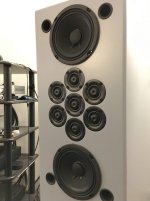 10-DI-tweeter-array-767x1024.jpg72 KB · Views: 42
10-DI-tweeter-array-767x1024.jpg72 KB · Views: 42 -
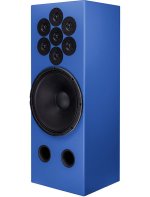 perfect_set_15_blue-600x785-1.jpg29.5 KB · Views: 40
perfect_set_15_blue-600x785-1.jpg29.5 KB · Views: 40 -
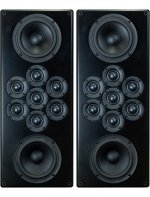 Tekton_Design_Impact_Monitors_Pair.jpg144.7 KB · Views: 43
Tekton_Design_Impact_Monitors_Pair.jpg144.7 KB · Views: 43 -
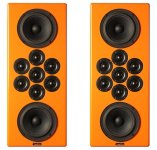 718tek.promo_.jpg69.7 KB · Views: 39
718tek.promo_.jpg69.7 KB · Views: 39 -
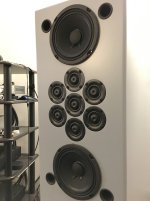 10-DI-tweeter-array.jpg277.7 KB · Views: 39
10-DI-tweeter-array.jpg277.7 KB · Views: 39 -
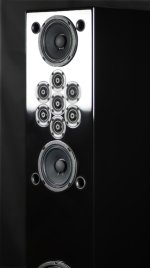 doubleimpact102_1_orig.jpg38.6 KB · Views: 30
doubleimpact102_1_orig.jpg38.6 KB · Views: 30 -
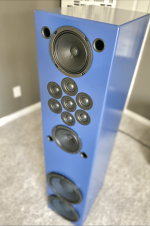 SS3-681x1024.png214.6 KB · Views: 38
SS3-681x1024.png214.6 KB · Views: 38 -
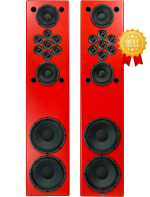 double-impact-pair-front-with-badge.png183.3 KB · Views: 47
double-impact-pair-front-with-badge.png183.3 KB · Views: 47
Yes.
But why?
Everything can be built yourself. Vacuum tubes...plenty of youtube videos.
Even nuclear reactor can be built yourself.
Why not microphone? Its just carbon dust between two metal plates, if you want electret.
But why? How will you calibrate it?
Do you have equipment to calibrate the diy mic?
But why?
Everything can be built yourself. Vacuum tubes...plenty of youtube videos.
Even nuclear reactor can be built yourself.
Why not microphone? Its just carbon dust between two metal plates, if you want electret.
But why? How will you calibrate it?
Do you have equipment to calibrate the diy mic?
- Home
- Live Sound
- Instruments and Amps
- Knowledge Inquiry

